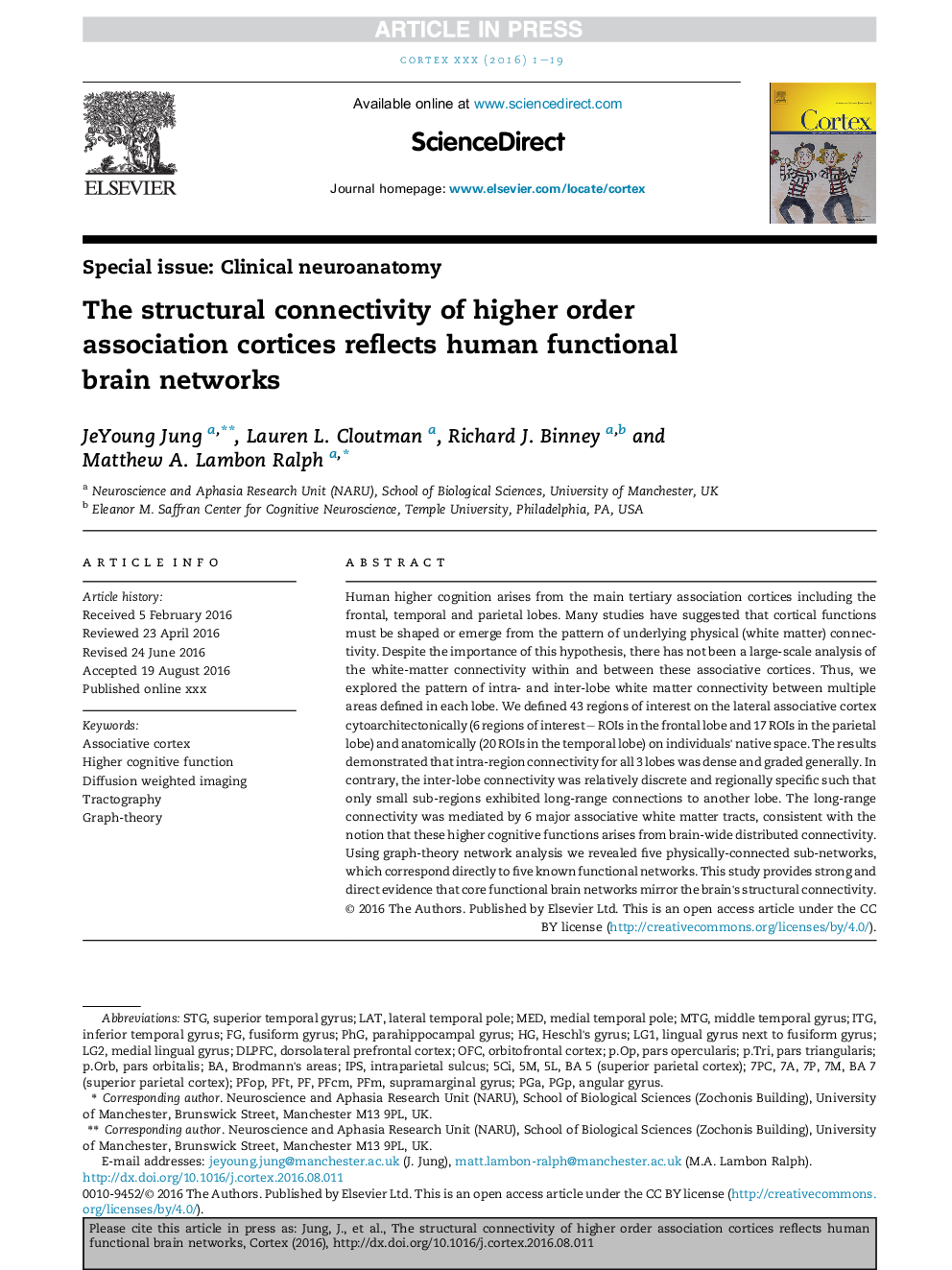| Article ID | Journal | Published Year | Pages | File Type |
|---|---|---|---|---|
| 7312340 | Cortex | 2017 | 19 Pages |
Abstract
Human higher cognition arises from the main tertiary association cortices including the frontal, temporal and parietal lobes. Many studies have suggested that cortical functions must be shaped or emerge from the pattern of underlying physical (white matter) connectivity. Despite the importance of this hypothesis, there has not been a large-scale analysis of the white-matter connectivity within and between these associative cortices. Thus, we explored the pattern of intra- and inter-lobe white matter connectivity between multiple areas defined in each lobe. We defined 43 regions of interest on the lateral associative cortex cytoarchitectonically (6 regions of interest - ROIs in the frontal lobe and 17 ROIs in the parietal lobe) and anatomically (20 ROIs in the temporal lobe) on individuals' native space. The results demonstrated that intra-region connectivity for all 3 lobes was dense and graded generally. In contrary, the inter-lobe connectivity was relatively discrete and regionally specific such that only small sub-regions exhibited long-range connections to another lobe. The long-range connectivity was mediated by 6 major associative white matter tracts, consistent with the notion that these higher cognitive functions arises from brain-wide distributed connectivity. Using graph-theory network analysis we revealed five physically-connected sub-networks, which correspond directly to five known functional networks. This study provides strong and direct evidence that core functional brain networks mirror the brain's structural connectivity.
Keywords
MTGBrodmann's areasITGPHGOFCDLPFCStgfusiform gyrusparahippocampal gyrusSupramarginal gyrusiPSPars opercularisMEDTractographyDiffusion weighted imagingsuperior temporal gyrusLATintraparietal sulcusHeschl's gyrusInferior temporal gyrusorbitofrontal cortexdorsolateral prefrontal cortexgraph-theoryPars triangularisangular gyrusmiddle temporal gyrus
Related Topics
Life Sciences
Neuroscience
Behavioral Neuroscience
Authors
JeYoung Jung, Lauren L. Cloutman, Richard J. Binney, Matthew A. Lambon Ralph,
